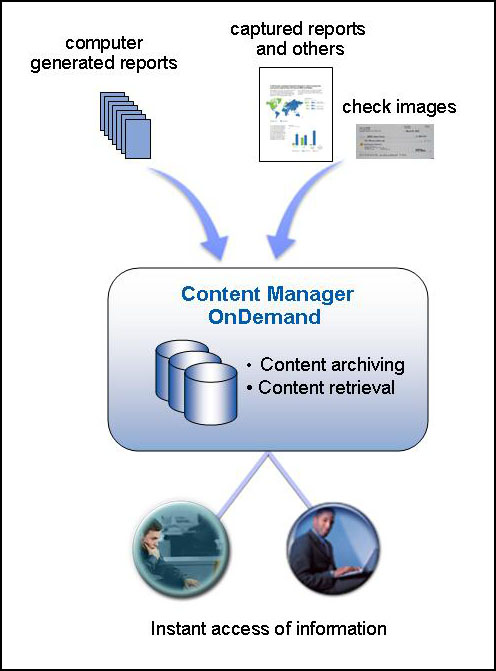About cookies on this site Our websites require some cookies to function properly (required). In addition, other cookies may be used with your consent to analyze site usage, improve the user experience and for advertising. For more information, please review your options. By visiting our website, you agree to our processing of information as described in IBM’sprivacy statement. To provide a smooth navigation, your cookie preferences will be shared across the IBM web domains listed here.
Abstract
Using IBM® Content Manager OnDemand, you can create solutions that provide high-speed archival and retrieval of information, thus benefiting any organization requiring instant access to information, hardcopy replacement, or long-term archival of data. The Content Manager OnDemand solutions can support small office environments and large enterprise installations with hundreds to thousands of system users. The solutions can dramatically improve productivity and customer service in many businesses by providing fast access to information that is stored in the system.
The high speed content archival and retrieval solutions using IBM Content Manager OnDemand can archive content such as computer generated reports, captured reports, check images, and others. In addition, the IBM Content Manager OnDemand solutions can provide instant access to the archived content on demand, and in their original content format. This IBM Redbooks® Solution Guide explains, from a high-level view, how you can create high-speed content archival and retrieval solutions by using IBM Content Manager OnDemand.
Contents
Using IBM® Content Manager OnDemand, you can create solutions that provide high-speed archival and retrieval of information, thus benefiting any organization requiring instant access to information, hardcopy replacement, or long-term archival of data. The Content Manager OnDemand solutions can support small office environments and large enterprise installations with hundreds to thousands of system users. The solutions can dramatically improve productivity and customer service in many businesses by providing fast access to information that is stored in the system.
The high speed content archival and retrieval solutions using IBM Content Manager OnDemand can archive content such as computer generated reports, captured reports, check images, and others. In addition, the IBM Content Manager OnDemand solutions can provide instant access to the archived content on demand, and in their original content format. This IBM Redbooks® Solution Guide explains, from a high-level view, how you can create high-speed content archival and retrieval solutions by using IBM Content Manager OnDemand. The following figure provides an overview of such a solution.

Figure 1. Overview of the solution using IBM Content Manager OnDemand
Did you know?
The IBM Content Manager OnDemand family of products provides industry-leading solutions that did not come into existence overnight. Its roots originated in the mid-1980s, and since then added features and functions with an ever-expanding customer base. Today, IBM Content Manager OnDemand solutions are considered to be mission-critical assets in many businesses ranging from small businesses to the Fortune 500 enterprises.
Perhaps the most important fact to know about the evolution of IBM Content Manager OnDemand solutions is that the core product, Content Manager OnDemand, has been modified and enhanced over the years based on direct requests from IBM customers. The success of the products and its solutions are based on fulfilling customer requirements for the content archiving needs of their businesses.
Because the solution that is described in this Solution Guide can be applicable to other types of Content Manager OnDemand solutions, and for ease of reference, we refer to the "high-speed content archival and retrieval solution" as the "Content Manager OnDemand solution" in the rest of the guide.
Business value
To compete in today’s global business environment, businesses must increase both the efficiency and effectiveness of their operations. Conflicting business requirements, such as increasing productivity while reducing costs, and increasing personalization while expanding to larger customer bases, can be achieved only through more streamlined and coordinated processes. IBM Content Manager OnDemand solutions help address these issues by securely storing information and managing its retrieval on demand whenever and wherever it is needed.
Specifically, transaction-based content and documents are at the heart of any organization’s operations. They might directly touch every aspect of the business, including back-office analytics and reporting, e-commerce, and customer service. In many cases, content distribution through print documents remains the most common, expensive, and inefficient options for business users and customers.
The lack of reliable management, transformation, and delivery tools for critical business content has left it siloed across organizations, which causes several problems:
Others who read this also read
Special Notices
The material included in this document is in DRAFT form and is provided 'as is' without warranty of any kind. IBM is not responsible for the accuracy or completeness of the material, and may update the document at any time. The final, published document may not include any, or all, of the material included herein. Client assumes all risks associated with Client's use of this document.
